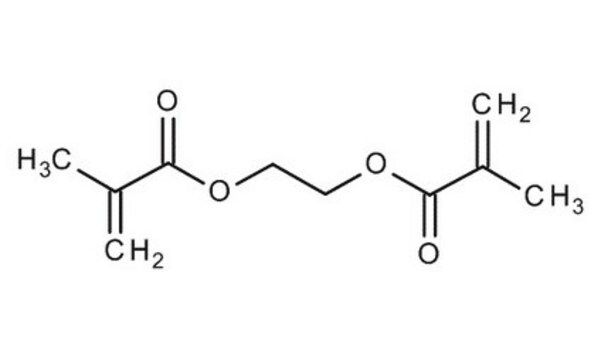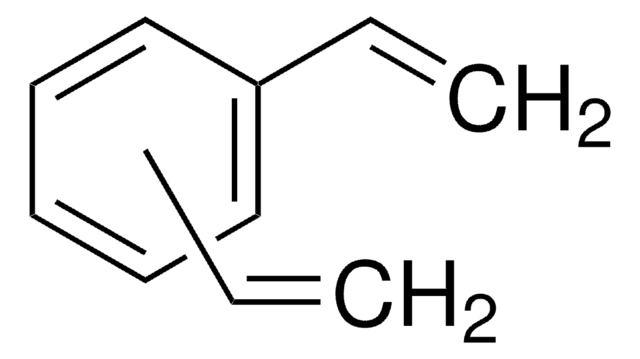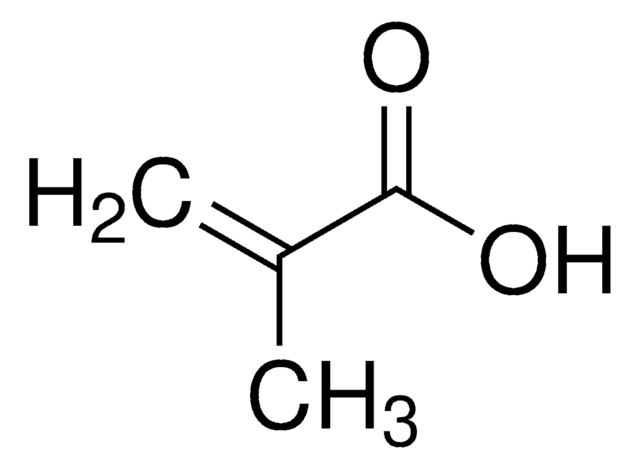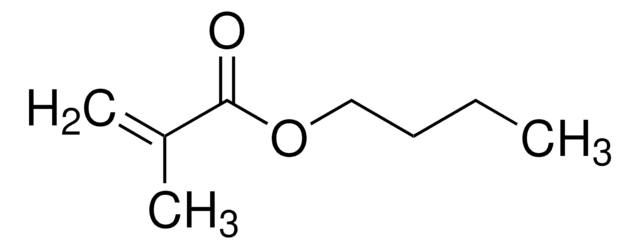335681
Ethylene glycol dimethacrylate
98%, cross-linking reagent polymerization reactions, methacrylate, 90-110 ppm monomethyl ether hydroquinone as inhibitor
Sinónimos:
Polyethylene glycol, 1,2-Ethanediol dimethacrylate, Ethylene dimethacrylate
About This Item
Productos recomendados
product name
Ethylene glycol dimethacrylate, 98%, contains 90-110 ppm monomethyl ether hydroquinone as inhibitor
densidad de vapor
>1 (vs air)
Nivel de calidad
presión de vapor
<0.1 mmHg ( 21.1 °C)
Análisis
98%
formulario
liquid
contiene
90-110 ppm monomethyl ether hydroquinone as inhibitor
idoneidad de la reacción
reagent type: cross-linking reagent
reaction type: Polymerization Reactions
índice de refracción
n20/D 1.454 (lit.)
bp
98-100 °C/5 mmHg (lit.)
densidad
1.051 g/mL at 25 °C (lit.)
Ω-final
methacrylate
α-final
methacrylate
arquitectura del polímero
shape: linear
functionality: homobifunctional
temp. de almacenamiento
2-8°C
cadena SMILES
CC(=C)C(=O)OCCOC(=O)C(C)=C
InChI
1S/C10H14O4/c1-7(2)9(11)13-5-6-14-10(12)8(3)4/h1,3,5-6H2,2,4H3
Clave InChI
STVZJERGLQHEKB-UHFFFAOYSA-N
¿Está buscando productos similares? Visita Guía de comparación de productos
Descripción general
Aplicación
- A terpolymer system, poly(acrylonitrile-co-Ethyleneglycol dimethacrylate-co-vinylbenzyl chloride), which is applicable as a sorbentin pharmaceuticals adsorption.
- PVA (polyvinyl alcohol) based hydrogel by free-radicalcopolymerization. These PVA polymer networks can be used as drug deliverysystems.
Palabra de señalización
Warning
Frases de peligro
Consejos de prudencia
Clasificaciones de peligro
Skin Sens. 1 - STOT SE 3
Órganos de actuación
Respiratory system
Código de clase de almacenamiento
10 - Combustible liquids
Clase de riesgo para el agua (WGK)
WGK 1
Punto de inflamabilidad (°F)
219.2 °F - Pensky-Martens closed cup
Punto de inflamabilidad (°C)
104 °C - Pensky-Martens closed cup
Equipo de protección personal
Eyeshields, Faceshields, Gloves, type ABEK (EN14387) respirator filter
Elija entre una de las versiones más recientes:
¿Ya tiene este producto?
Encuentre la documentación para los productos que ha comprado recientemente en la Biblioteca de documentos.
Los clientes también vieron
Artículos
The manufacture of monomers for use in ophthalmic applications is driven by the need for higher purity, improved reliability of manufacturing supply, but ultimately by the need for the increased comfort, convenience, and safety of contact lens wearers. Daily wear contact lenses have the potential to fill this need for many customers; however, their widespread use is constrained by higher costs compared to weekly- or monthly-based lenses. New approaches that improve cost structure and result in higher quality raw materials are needed to help make contact lenses more affordable and accelerate growth of the contact lens market.
Nuestro equipo de científicos tiene experiencia en todas las áreas de investigación: Ciencias de la vida, Ciencia de los materiales, Síntesis química, Cromatografía, Analítica y muchas otras.
Póngase en contacto con el Servicio técnico










